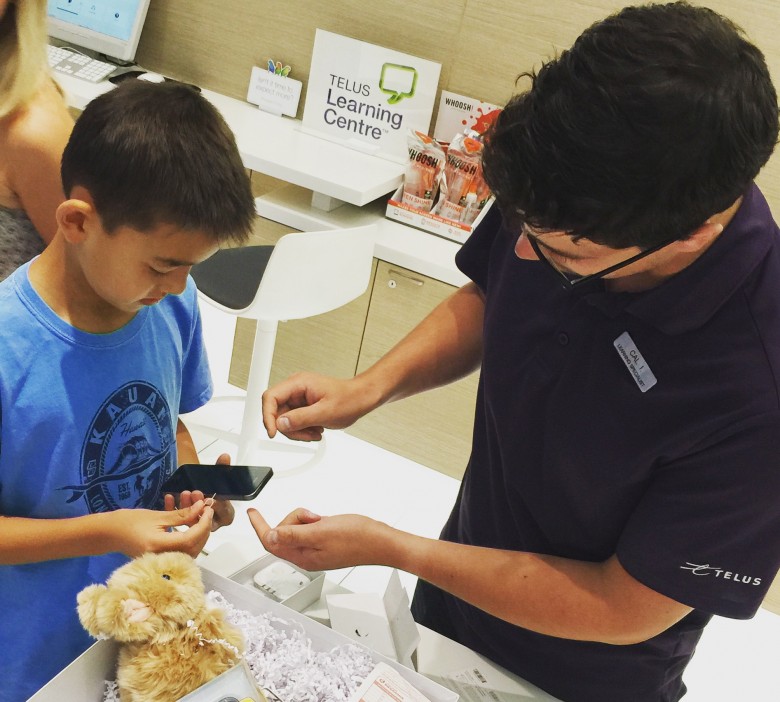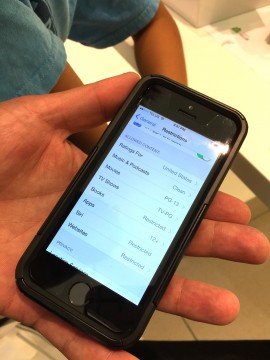Like many of you we’ve got a shopping checklist as we gear up for back to school. This list includes the fresh backpacks, pencils, markers, new running shoes and a few wardrobe updates for the kids—don’t they grow like weeds over the summer? This coming school year, we’ve also decided it’s the right time for our younger son to have his own smartphone.
I often get asked “At what age should I get my child their first smartphone?” The answer is really up to your family. There is no hard “rule” as to what age is appropriate but I always say to parents to ask themselves, what’s the ultimate reason for giving one to their child? Is their child ready to walk to and from school alone? Can your child handle the responsibility of owning a smartphone?
Rather than getting swept up with what all my son’s friends have, we’ve sat down as a family and discussed what would best serve our needs. We’ve discussed, first and foremost, what our expectations are. We’ve already researched various carriers with our older son so that was a no-brainer. Here’s our checklist for the new addition….
What does he want to do with his smartphone?
1. Be able to contact mom, dad and brother by text, email and phone.
2. Connect with friends via phone, text and email.
3. Play games.
4. Download music.
5. Use various social media apps.
What do WE expect him to do with his smartphone?
1. Be able to contact mom, dad, and other family members by text, email or phone.
So, how do we juggle his wants and our needs?
First off, we’ve decided that he won’t need data on his phone to begin with. Although I can share my data plan with him it’s simply not necessary at this time. We have other devices to do all the surfing he wants while connected to Wi-Fi at home. He can download the games and music onto his smartphone and play offline. As he moves into high school in a couple of years we’ll probably add on data but for now he agrees that data on his phone is not necessary. He also agrees that he doesn’t need the latest smartphone device on the market. Let’s keep in mind that devices from even a year or two ago are still great as entry level phones for younger kids. He also understand that responsibility comes with having a phone and if it gets lost or broken, it will be up to him to save up for a replacement.
What to look for when shopping for your first smartphone?
Customer service is key for our family. When it comes to the devices, they all pretty much carry the same products but technology moves fast so it’s important to get a sense of service whether in-store or online. We were drawn to great advice for families about internet safety at Telus Wise online as well as their in-store Learning Centres where you can book one-on-one sessions to ask anything you want about the devices. Cal Irvine met us at our nearest store to help set my son up on his new phone and his advice for parents was invaluable. As a Learning Specialist, Cal brings real knowledge and street smart advice especially for parents and kids. We all learned more than expected. By the way, he’s written a great blog about getting that all important first smartphone.
1. Have your child make a list of all the questions they have (remember there are no stupid questions!) before shopping for a smartphone and have them ready.
2. As a parent, have your list of questions as well.
3. Determine your needs and if you prefer your child’s device to include parental restrictions? Not all phones are created equal, so be sure to do your research.
4. What can you, as a family, share with your existing plans to make things more cost efficient.
5. Be sure to get the right accessories at this time. There’s no better investment for your device than a sturdy protective case. OtterBox or CAT protected cases are great choices. Screen protectors are also a good idea. The thin layer helps protect the screen from accidental spills and offer added protection from cracks.
If you’re child already has a smartphone, this is also a good time of year to do a refresh of smartphone safety and general usage. Here are a few guidelines:
1. Check that your restrictions are up to date. If you’re child seems ready and responsible you may want to make a few adjustments.
2. Check their privacy settings, location services, social media activity and clean up together.
3. Delete unused apps and update active apps.
4. See how much data is being used on average. It’s a good time to adjust your plan if necessary.
5. Review any family rules and guidelines.
What else do you consider when researching a smartphone for your child? Let us know in the comment section below!



Really informative. Cheers!